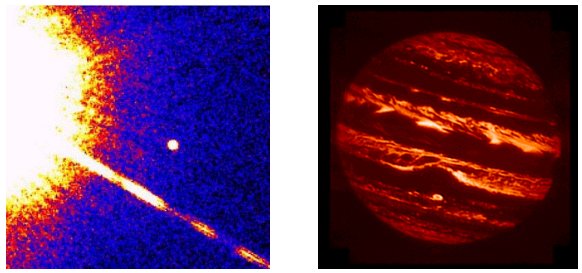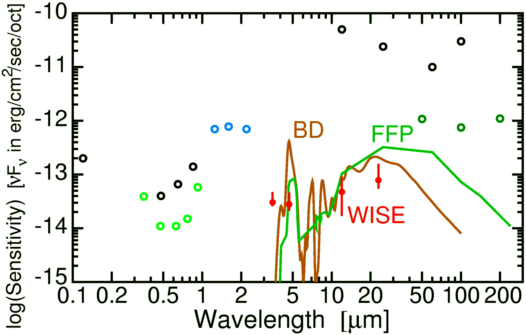
Stars with masses less than about 0.08 solar masses, or 80 Jupiter masses, do not become hot enough in their centers to fuse hydrogen into helium. Without this long term source of power, these stars cool off to the point where they are essentially invisible in optical light, but they can still be detected in the infrared region surveyed by WISE. These very cool, very faint stars are known as brown dwarfs. Two new spectral types, L & T, were defined by WISE science team member Davy Kirkpatrick to extend the OBAFGKM spectral sequence to these cooler objects.

WISE is sensitive to radiation with wavelengths of 5 microns, and both GL229B, a brown dwarf which is 100,000 times fainter than the Sun and is seen on the left image above, and Jupiter, which is one billion times fainter than the Sun, emit a large fraction of their radiation at 5 microns, as shown in the Figure below:

Plot showing nearby objects compared to the sensitivity of WISE. a free floating Jupiter at 1 light year (FFP), and a 200 K brown dwarf at the distance of Proxima Centauri (BD).
These low mass stars are expected to be more numerous than the more massive stars like red dwarfs, and thus there should be brown dwarf stars closer to the Solar system than Proxima Centauri. The green curve shows a 200 K model atmosphere calculation from Burrows et al. (1997) for an object with the radius of Jupiter at the distance of Proxima Centauri. WISE will easily be able to detect these nearby brown dwarfs.